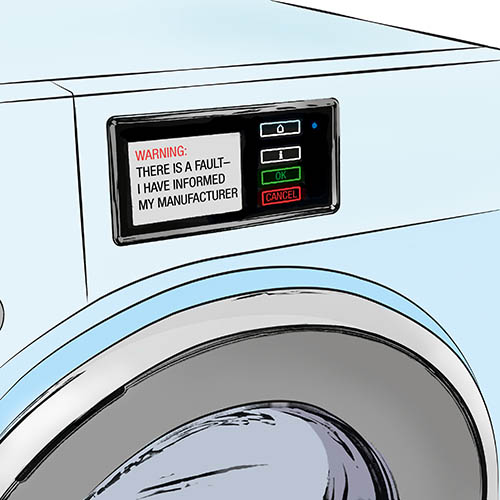As the IoT gains momentum, smart tech offers the tantalising possibility of making appliances, and consequently the consumer’s home, safer, says Martyn Allen, technical director at Electrical Safety First
We are at the end of the beginning of the third industrial revolution.
Today, the Internet of Things has left the pages of sci-fi and entered real life as the ‘smart home’.
As technology becomes embedded in our homes, the number of smart appliances and electrical gadgets we own has dramatically increased, while the manner in which we buy them has also undergone its own transformation.
To add to the complexity, all these developments are taking place while the legislative landscape is being transformed. Not simply because of Brexit, but also as evidenced by the Government’s launch of its Office for Product Safety and Standards (OPSS). And the electrical retail industry is one of those at the coalface of this major shift.
Earlier this year, Electrical Safety First hosted an industry summit entitled How a Connected Home can be a Safe Home. Speakers representing a host of areas, from legal services to retailers, manufacturers and installers, discussed the smart home and issues around product compliance, safety and security, as well as the opportunities and skills needed to install connected homes.
The event attracted delegates across the installation and product supply chain, but was of particular relevance to retailers who offer smart home solution services – or are planning to.
The initial session gave an overview of the pros and cons of a connected home, focusing on the potential for enhancing consumer safety with modern technology. The popular press has highlighted certain advantages of the smart home, such as the ability to tailor the environment to personal needs and the economic gains effective monitoring and customisation can provide.
The safety benefits – such as improved recall effectiveness and automatic product registration – have had little coverage, as yet. That looks set to change, as awareness of product safety has risen up both the news and political agendas.

Accessible
Our charity has been a member of the Working Group on Product Recalls and Safety since 2014 and has long lobbied for the development of a centrally-managed product recall database. This would allow a straightforward and accessible way for consumers to determine if their appliances are safe and not subject to a recall or safety notice.
Smart appliances could easily offer automatic registration and dramatically improve the efficiency of recalls – which hovers around a 10 to 20 per cent success rate – protecting both the consumer and brand reputation.
During the final part of the summit, discussions centred on the installation, safety and quality of connected devices, including the role of standards and interoperability. One consequence of the rapid increase in the number of innovative consumer products being sold is that many don’t have a safety standard that covers them.
Of course, the primary requirement is to ensure any product placed on the market is safe for consumers to use. But in the absence of standards, exactly what kind of testing is most useful in ensuring consumer safety?
We live in a time of rapid technological advances, but, in the drive to market, the speed of product development can easily outstrip the – frequently painfully slow – process of standard-setting. This results in many products coming to market that don’t have a standard that covers them.
And while standards are considered product-safety fundamentals, it must be remembered that they set the minimum requirements. They are not aspirational. Nor do you need one to put a product on the market – although you do need to comply with the law and ensure that a product is safe before selling it.
Testing
So, in the absence of standards, exactly what kind of testing is the ‘right’ test to ensure consumer safety? Adopting a ‘safer in design’ culture and engaging with experts, including test houses, are paramount to ensuring safe products.
The last part of the summit reviewed the ways in which technology is acting as a disruptor to impact on the ‘traditional installer’ – and reviewed the skill set needed for installing technology in connected homes. While competent, trained electricians are ideally placed to become a smart-home installer, an additional, wider range of installer skills are required to deliver fully integrated lighting, heating and AV systems.
Key to delivering these solutions is a fundamental understanding of electricity and structured wiring – and most electricians have also been exposed to other trade services such as security and AV.
Today, a number of manufacturers offer certified courses in smart-home installation, but speakers at our event recommended undertaking training that doesn’t lock the installer – or the customer – into one manufacturer.
Electrical Safety First also strongly recommends that electrical retailers planning to enter the smart-home market ensure they use properly qualified and trained installers.
Training is essential to successful smart-home customer service and the repeat customers every business needs to survive.


